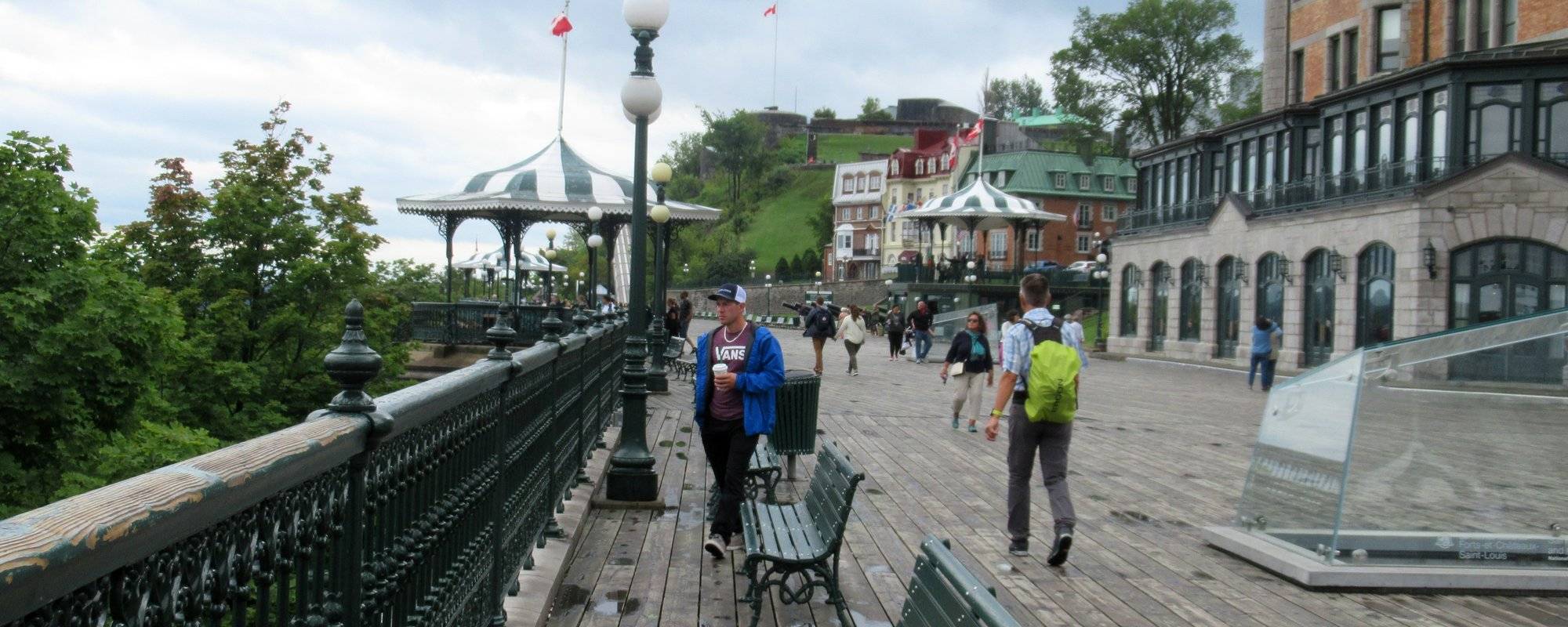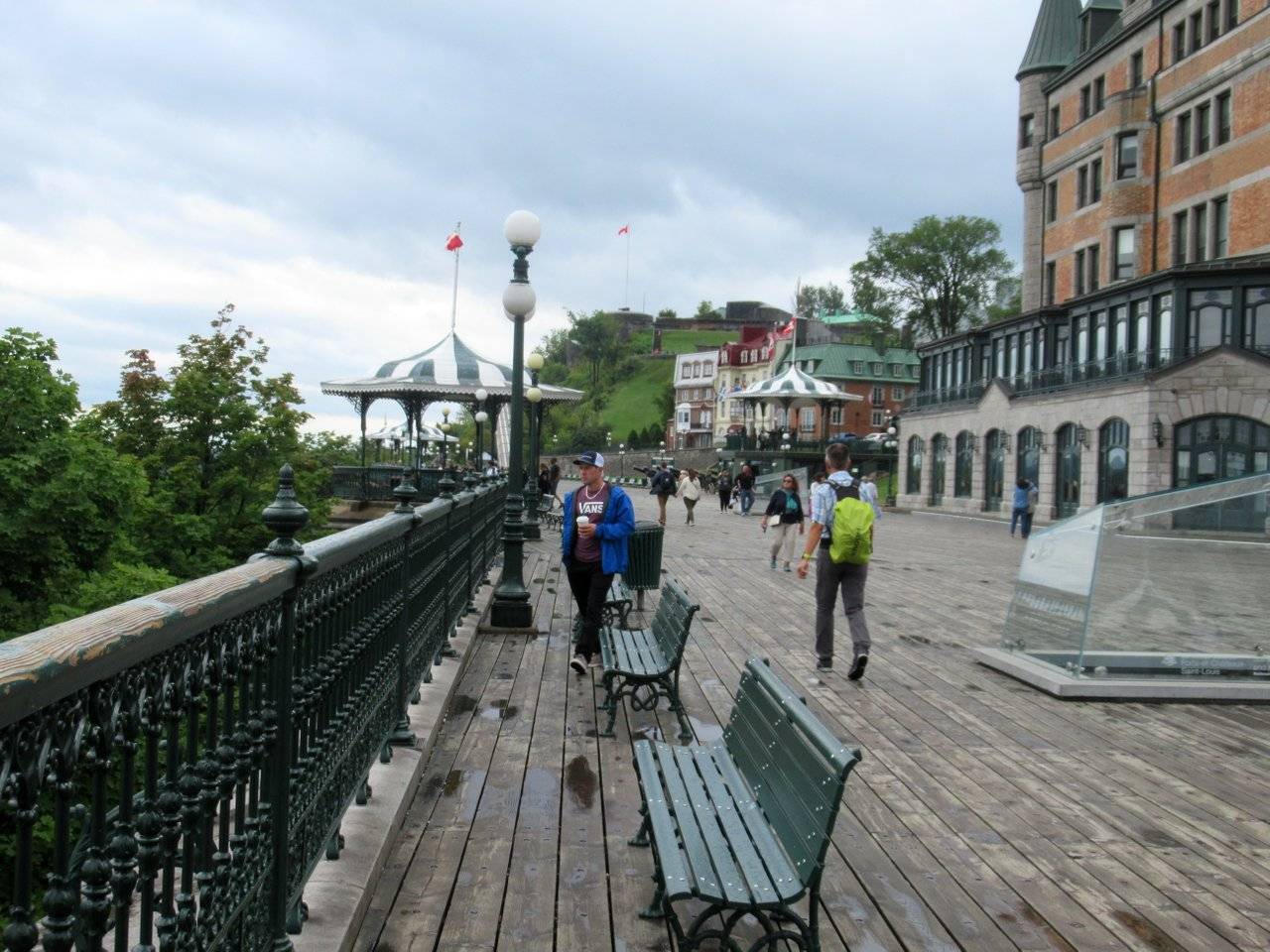
You're standing on the Dufferin Terrace with the beautiful and imposing Fairmont Le Chateau Frontenac looming above, but what's that glass object in the foreground?
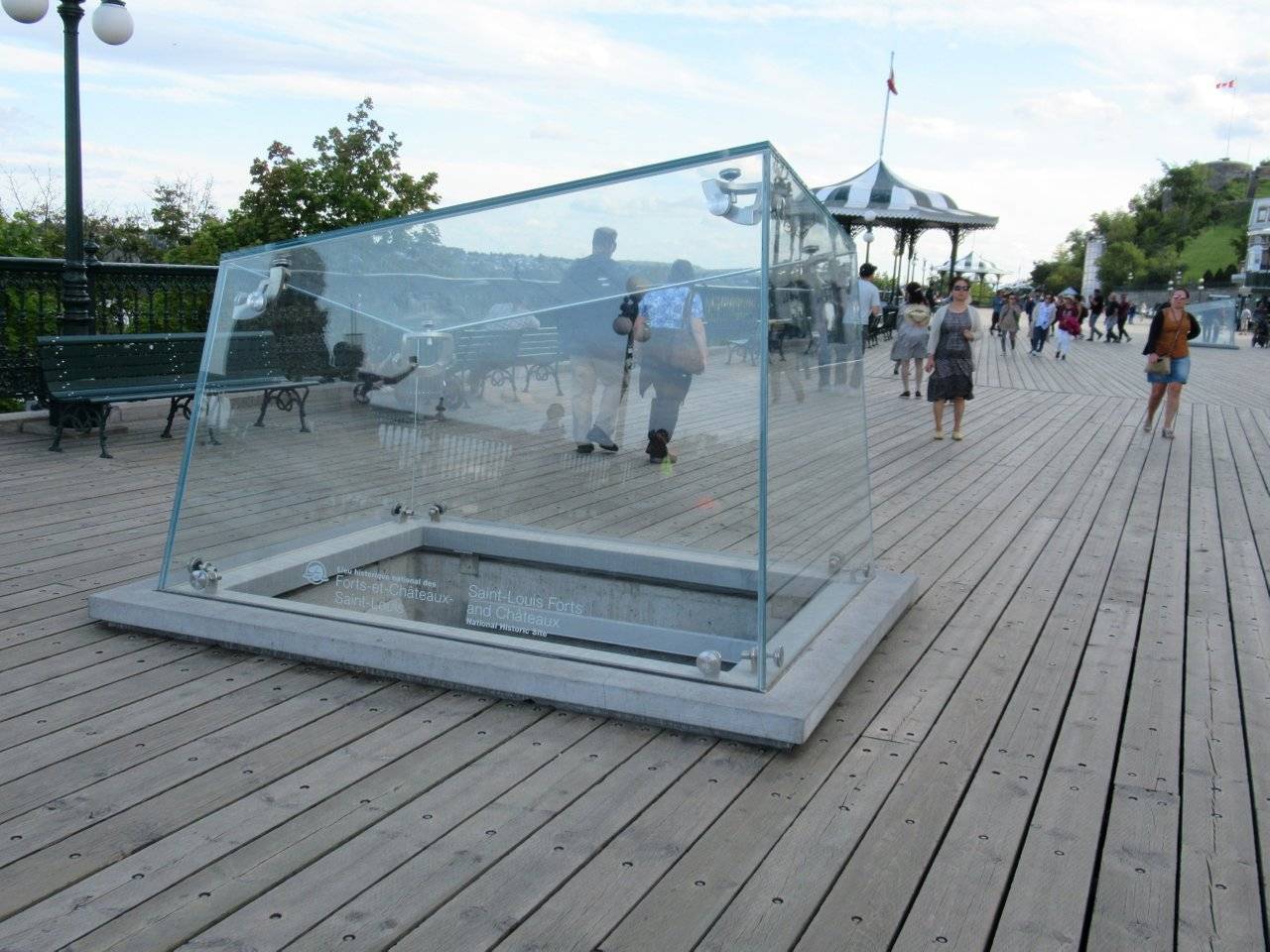
It's a Skylight, one of several.
We walked over and peeked through the glass to see people walking down below us. Then we found the kiosk, got our tickets and went down the nearby stairs to the museum. What we saw were the results of archeological digs conducted between 2005-2007.
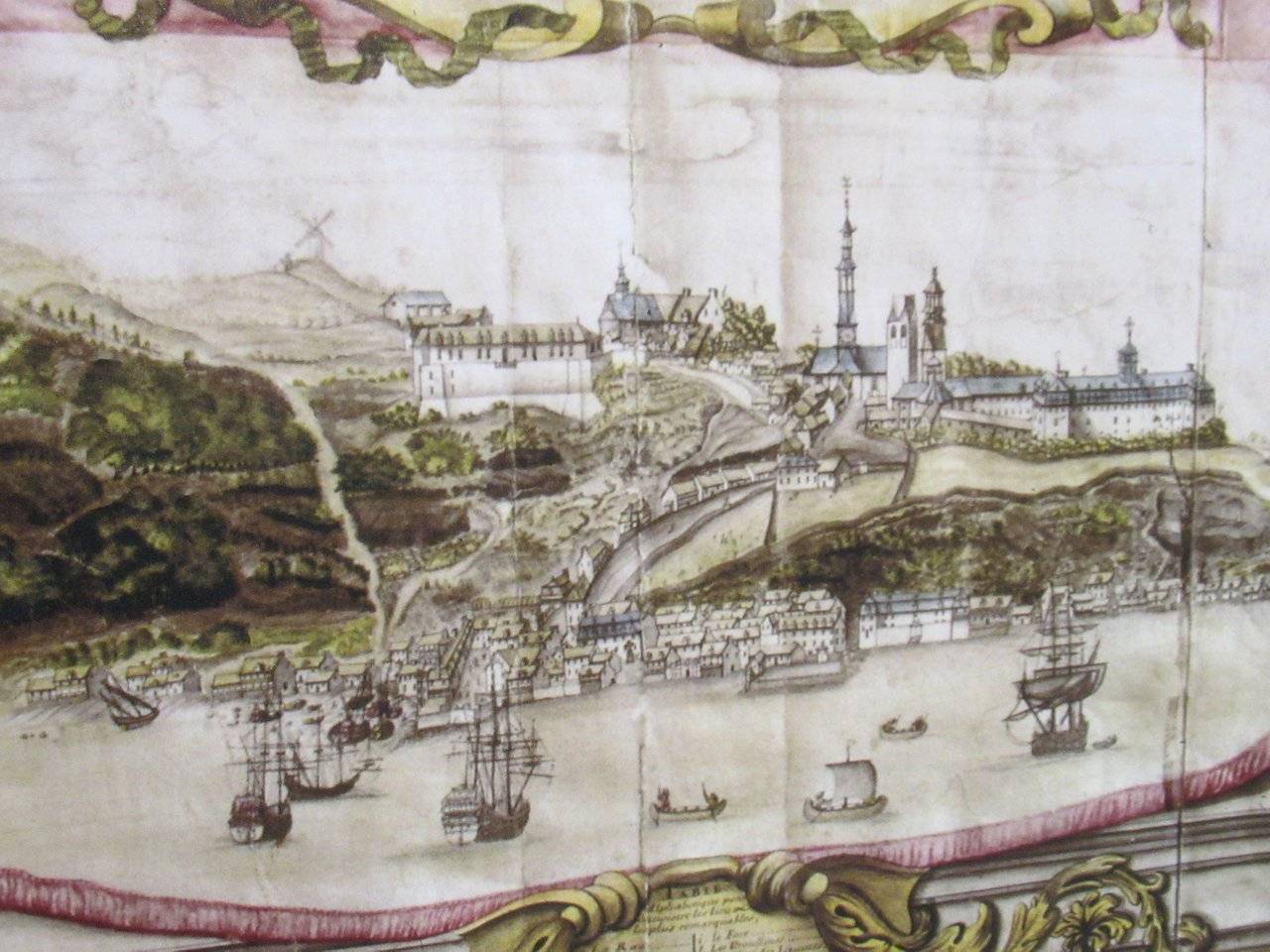
Above, this is how Quebec City once appeared. At the foot of the cliff is Lower Town where, in 1608, Samuel de Champlain erected his "Abitation" that served as a fort, storehouse, trading post, and his residence.
In Upper Town, the wall has not yet been built and the white building, Chateau Saint-Louis, is the one whose ruins we are visiting today. The chateau was the home of 42 governor(s) general (French then British) as well as the center of government for over 200 years.
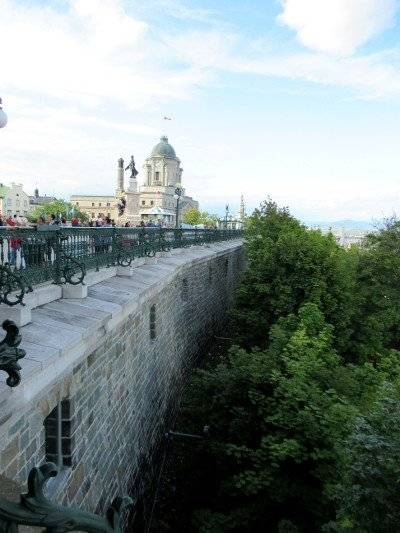
In this photo, the ruins of Chateau Saint-Louis are under the terrace on the other side of that wall.
So they always knew there was something under there, and when they started excavation, they discovered there was so much more, they covered the site until they could secure additional funding, and they did.
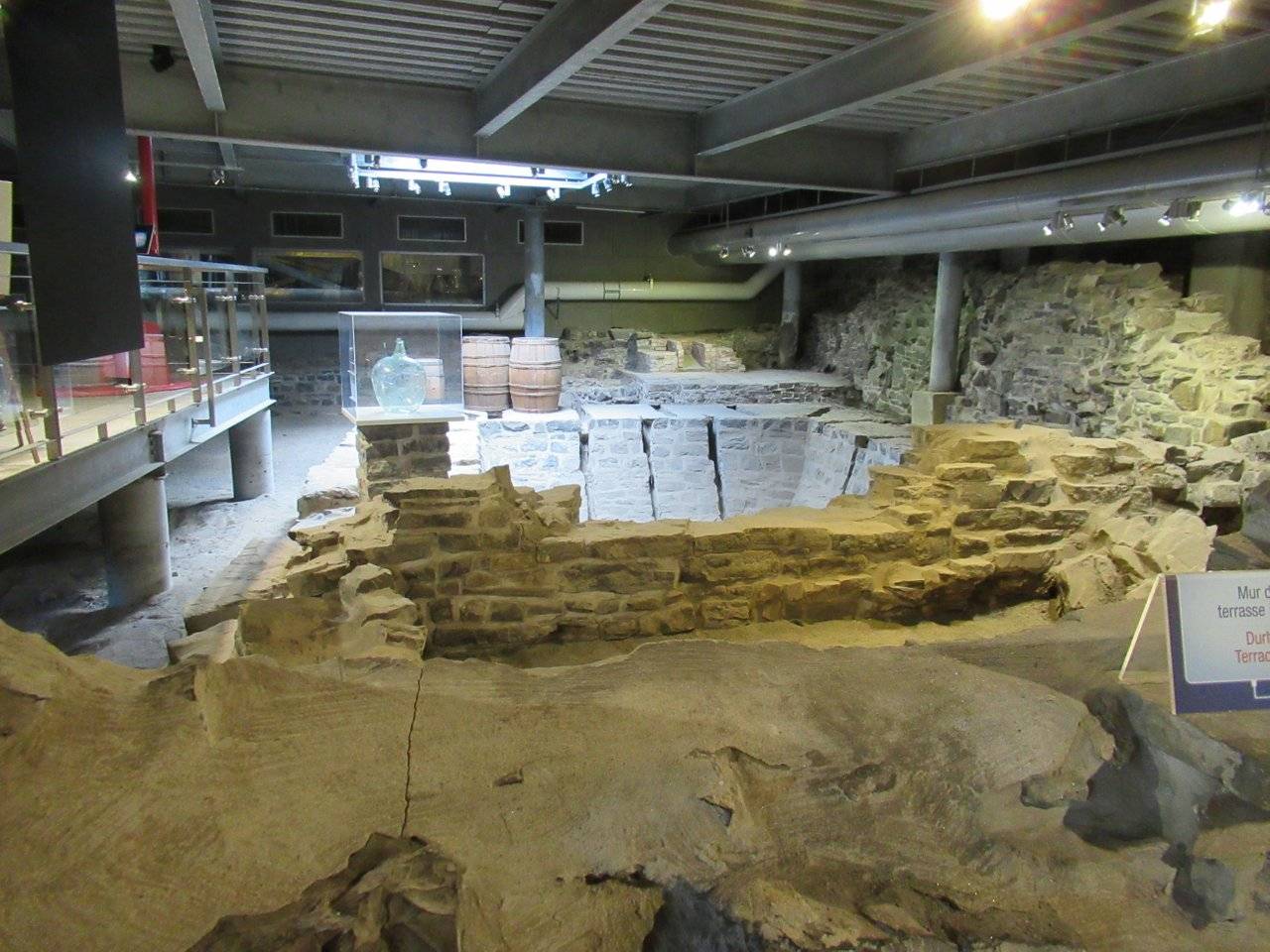
Inside the small museum were the ruins of walls, living quarters, large artifacts such as storage barrels, artifacts in display cases, maps, some clothing, signs ...
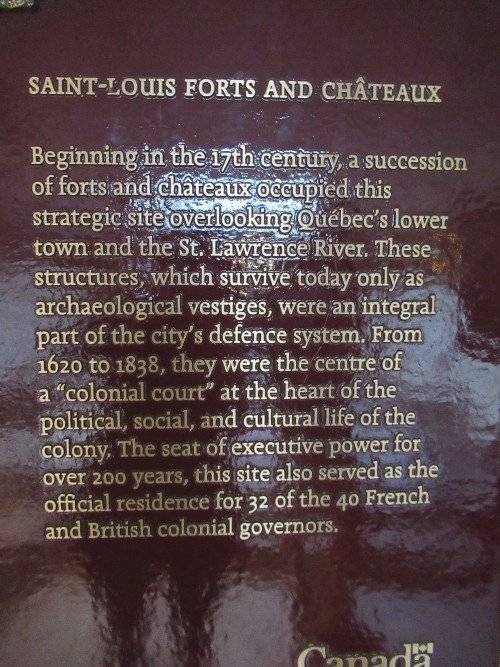
I will let you guess the purpose of this, below, before I tell you.

Give up? That is the refrigerator (ice pit). In winter, ice hauled up from the river far below, was placed in the pit and insulated with straw or sawdust. Covered this way, it could last until the next winter.
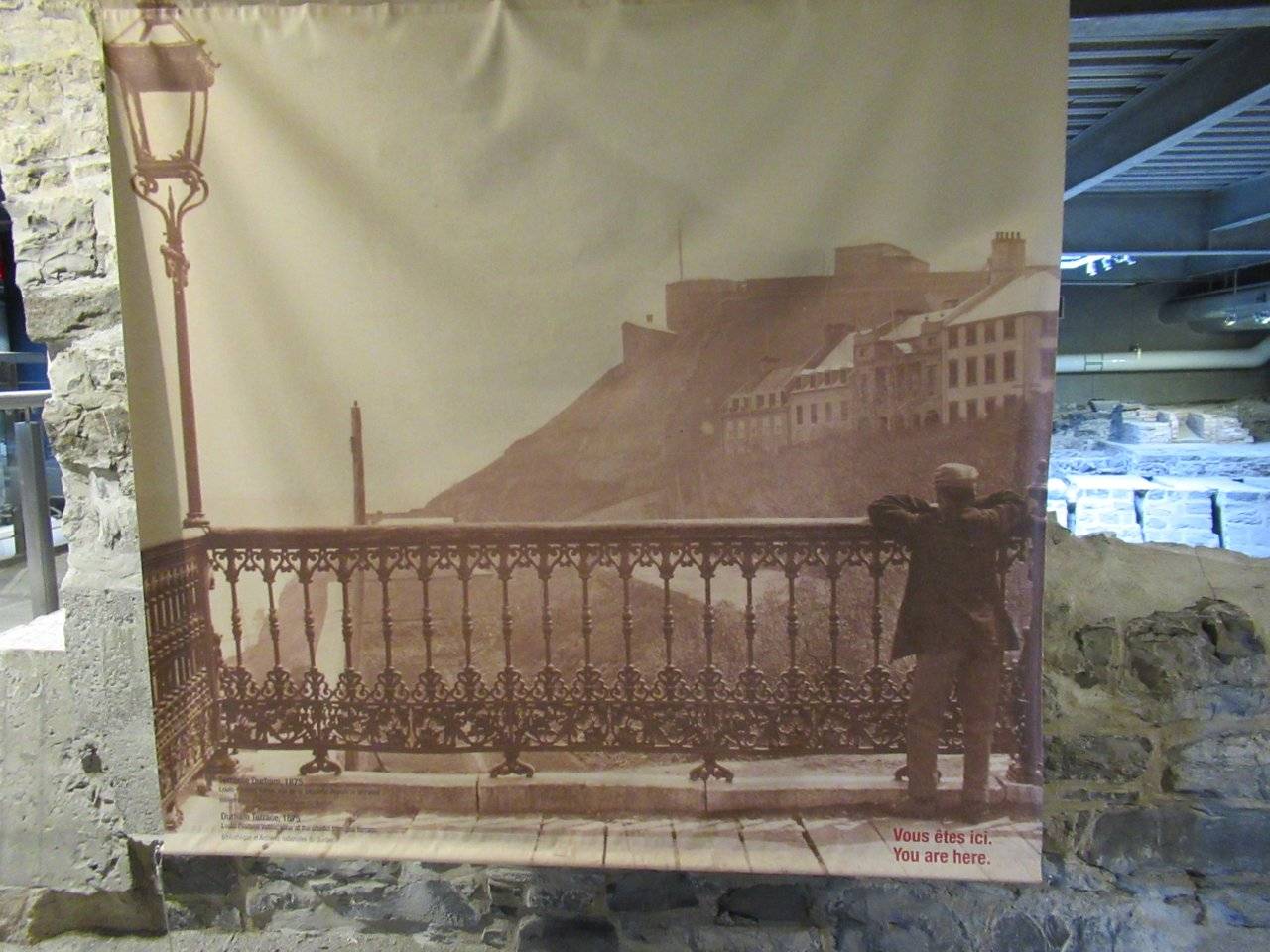
In this photo, you look upwards towards the Citadel on the hill. This view is now obscured by the terrace, staircases, wall, walkways, and trees. We walked beside its walls on our first day here.
One of the most interesting parts of the museum was the latrine. It was filled with small stones and enclosed by a tiny wall that could be stepped over. Think of it as a human sized litter box but I bet five people could use it at once! Imagine in these days before modern hygiene, with close living quarters and their proximity to the latrine, this couldn't have been a nice smelling place but neither were most places back then.
It didn't take too long to go through the museum and we went back up the stairs to the boardwalk.
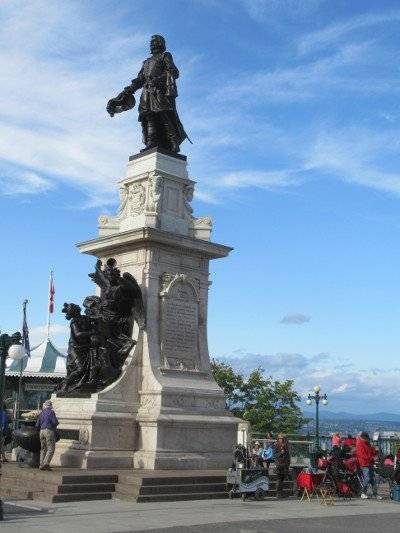
First, Jacques Cartier reached this area in 1535 when it was the Iroquoian capital of Stadacona. He was searching for the Northwest Passage that he hoped would be a shortcut to China. He and his crews, sick and dying, spent the winter here in a fort with their three ships frozen in the St. Lawrence River ice. They survived because the Iroquois showed them the native remedy for scurvy among many other things.
It wasn't until 1608 that Samuel de Champlain founded Quebec and New France, and started the settlement in Old Quebec's Lower Town. A monument to Samuel de Champlain, above right, graces the Terrace.
Overall, Quebec City's fortification were constructed or reconstructed over a long period of time, between 1608-1871, first by the French and then, after the 1759 Battle of the Plains of Abraham, by the English.
Chateau Saint-Louis construction commenced in 1620.
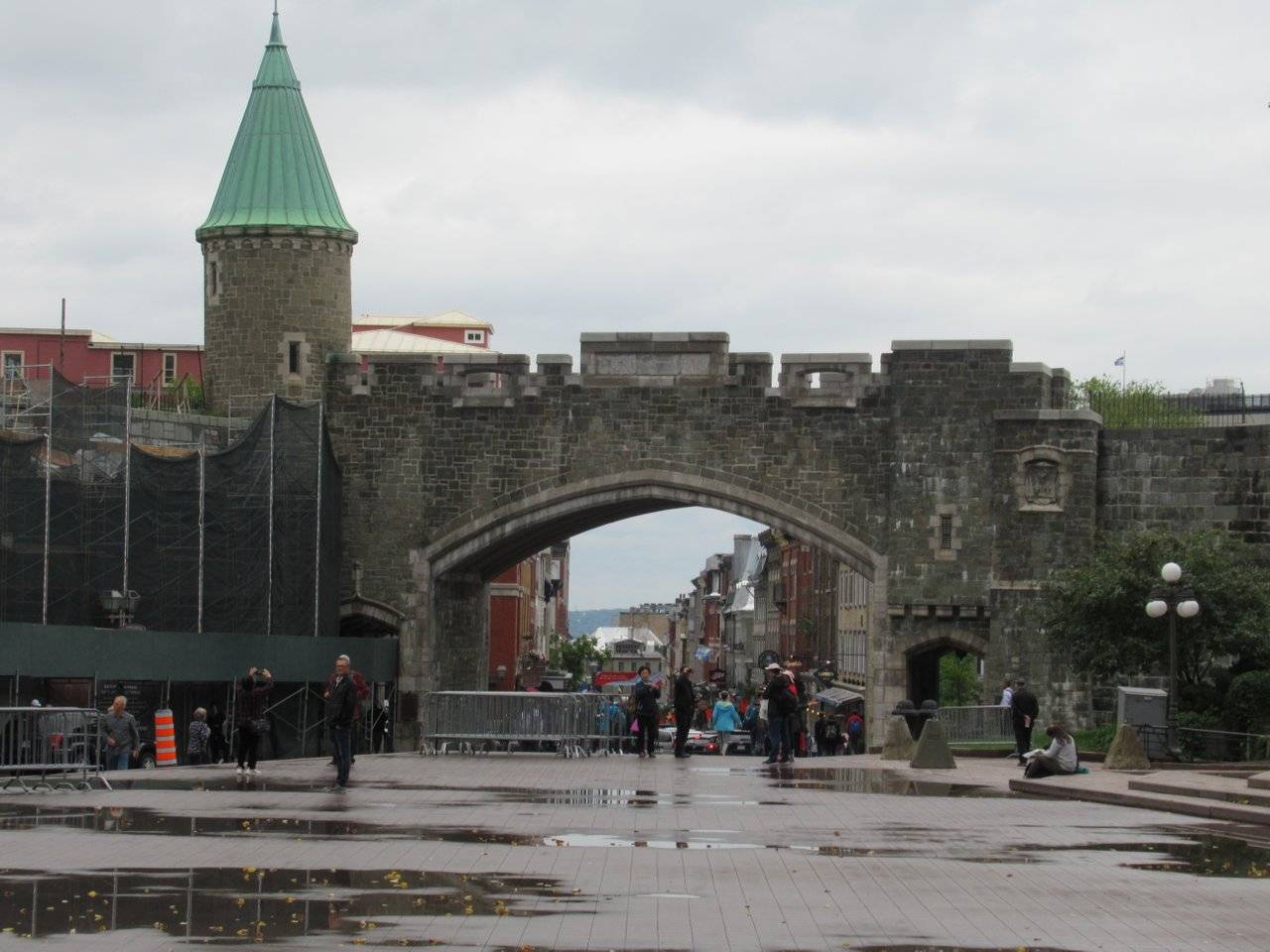
The first wall surrounding Upper Town was built starting in 1694. By 1759, the French were just completing, not just its replacement but its second replacement. Afterwards, the British started fortifying the walls. Incidentally, you can walk along the top of the 4.6 km (2.86 miles) wall.
While the original wall had 3 gates, under British control, these were expanded, renamed, more added and, later, some destroyed. Today, 5 gates remain. Above, the current Saint Jean (John) Gate was reconstructed between 1938 and 1939, and below, the current Saint Louis Gate between 1878 and 1881.

The Americans invaded Canada and were defeated by the British in the War of 1812. This was enough for the British to construct the Citadel, between 1820 and 1850, but it was also built to ward off a civil rebellion.
Don't Forget: Get Travel Health Insurance!
To make your trip a worry-free experience, TravelFeed recommends SafetyWing Nomad Insurance. It provides comprehensive health coverage while you travel, so you can focus on exploring, not the unexpected. Get a quote here
As mentioned previously, when Chateau Saint-Louis burned down in 1834, the terraces were built over it and the Chateau was relocated to the current location of the Chateau Frontenac. It wasn't until 1892-1893, almost 60 years later, that the much larger and beautiful Chateau Frontenac, a Canadian Pacific Railway hotel, replaced it.
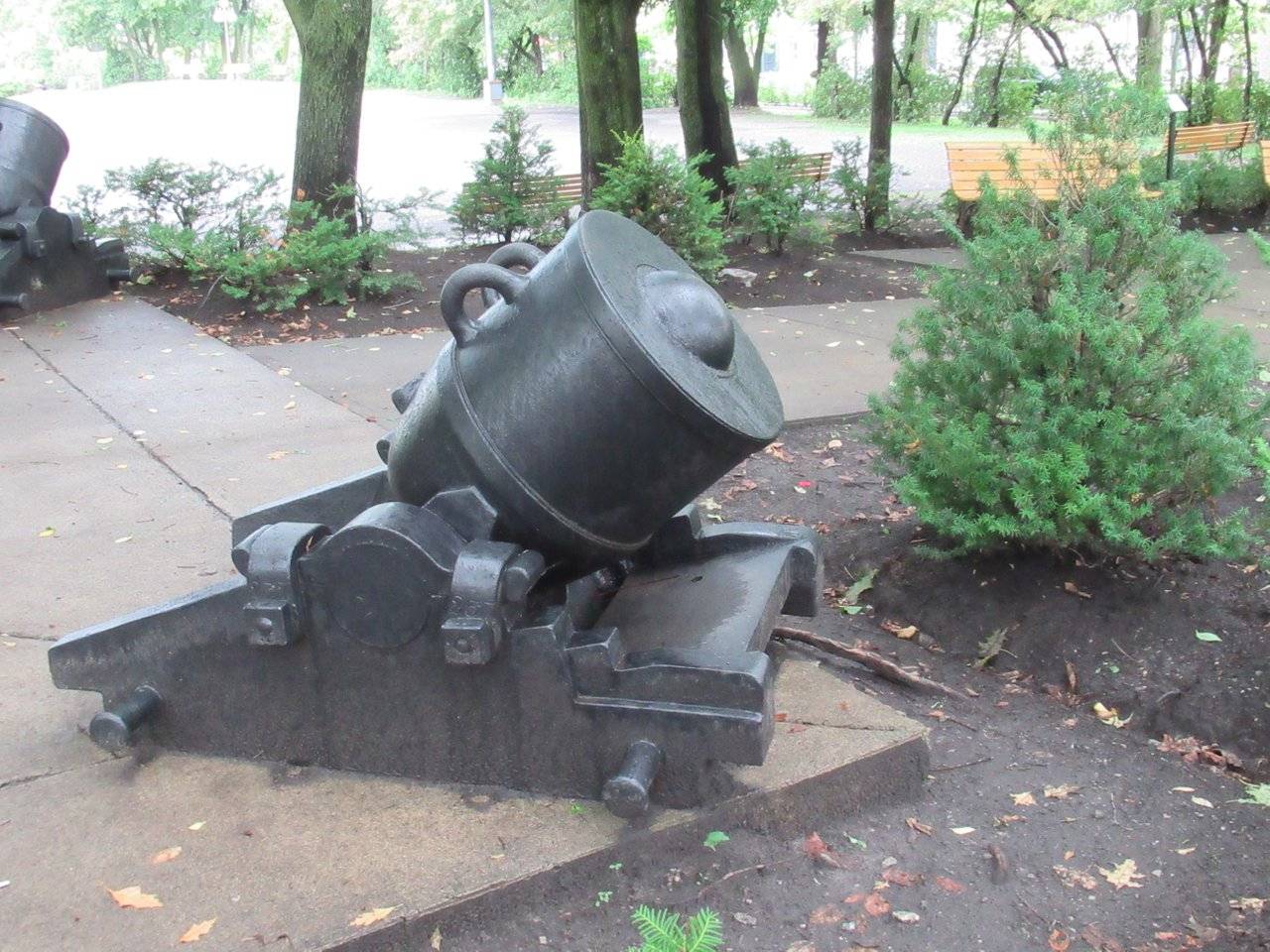
Old Quebec City is beautiful and while touring it, it's impossible not to see that it's a fortified city. In fact, it's the only walled city North of Mexico, but it's not only the citadel, wall or barrack district that make this obvious, there are also canons. This is a small one.
References
Jacques Cartier
Samuel de Champlain
Fortification Wall of Quebec City
Parks Canada ~ Fortifications of Québec National Historic Site ~ FAQs
Quebec City's Gates
Fairmont Le Chateau Frontenac
Old Quebec
Citadelle of Quebec
Images
All photos were taken by me with my Canon SX620 HS, in Old Quebec City, Quebec, Canada.

Enjoy!
@kansuze
Travel Resources
Recommended by TravelFeed
Flights: We recommend checking Kiwi.com to find the best and cheapest flights .
Accomodation: Find great stays on Booking.com, Agoda and Hostelworld.
Travel Insurance: Medical emergencies abroad can be pricey, but travel health insurance is not. We always use SafetyWing for affordable and reliable coverage.
Car Rental: For hassle-free car hiring, DiscoverCars is our trusted choice with a wide selection of vehicles.
Internet: Got an eSIM compatible phone? Airalo is perfect for reliable internet access during your trip. Just install it before you go, and you're set!
Day Trips & Tours: We recommend GetYourGuide for a variety of well-organized and enjoyable activities.
Travel Planner: Need a hand planning? Our free travel planner chatbot is your personal guide. Chat now.
Disclosure: Posts on TravelFeed may contain affiliate links. See affiliate disclosure.
